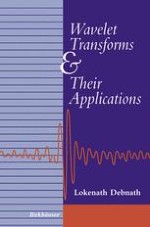2002 | Buch
Über dieses Buch
Overview Historically, the concept of "ondelettes" or "wavelets" originated from the study of time-frequency signal analysis, wave propagation, and sampling theory. One of the main reasons for the discovery of wavelets and wavelet transforms is that the Fourier transform analysis does not contain the local information of signals. So the Fourier transform cannot be used for analyzing signals in a joint time and frequency domain. In 1982, Jean MorIet, in collaboration with a group of French engineers, first introduced the idea of wavelets as a family of functions constructed by using translation and dilation of a single function, called the mother wavelet, for the analysis of nonstationary signals. However, this new concept can be viewed as the synthesis of various ideas originating from different disciplines including mathematics (Calder6n-Zygmund operators and Littlewood-Paley theory), physics (coherent states in quantum mechanics and the renormalization group), and engineering (quadratic mirror filters, sideband coding in signal processing, and pyramidal algorithms in image processing). Wavelet analysis is an exciting new method for solving difficult problems in mathematics, physics, and engineering, with modern applications as diverse as wave propagation, data compression, image processing, pattern recognition, computer graphics, the detection of aircraft and submarines, and improvement in CAT scans and other medical image technology. Wavelets allow complex information such as music, speech, images, and patterns to be decomposed into elementary forms, called the fundamental building blocks, at different positions and scales and subsequently reconstructed with high precision.
Anzeige
